Leopard Gecko Vivarium – create an environment in 10 minutes
5 min read
A step by step guide to how Nigel set up this Leopard Gecko habitat. #
For this Leopard Gecko vivarium set up you will need;
- Tools
- a phillips head screwdriver
- some gaffa tape
- a marker pen
- Equipment
- An empty vivarium
- heat lamp holder
- heat lamp (in this case a 13w uvb bulb)
- a heat map
- a mat thermostat
- Environment
- Substrate (we used bio life desert)
- rock (we used slate)
- some spare pond piping
- an arid plant
- some wood
- leaf litter
Here’s our selection;
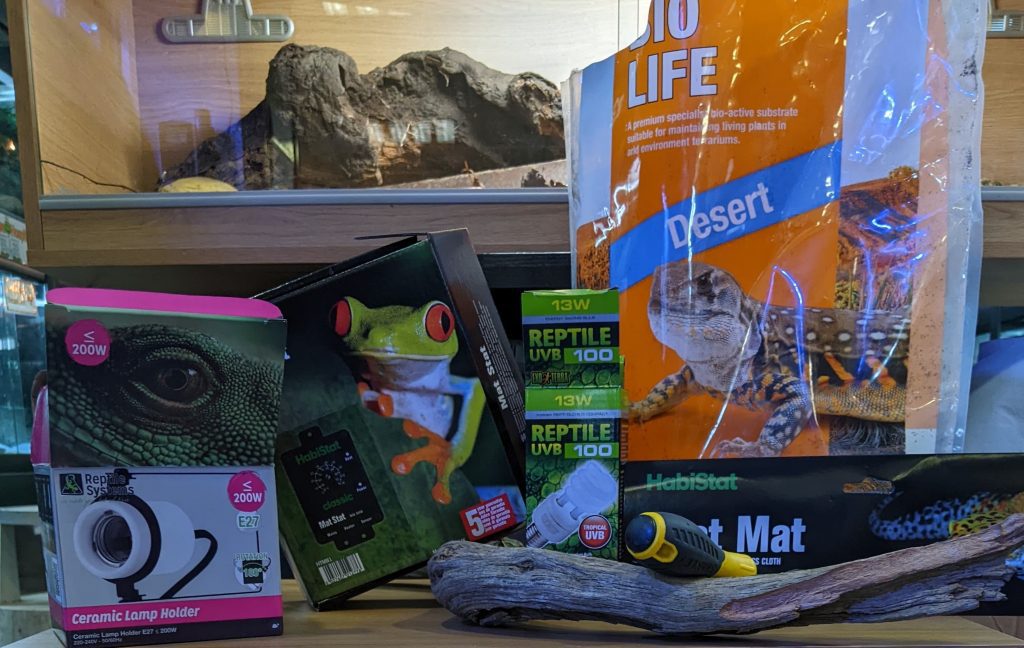
Firstly, start with your vivarium and take the glass doors out for now – they’ll just make life difficult during the build.
Next, take the top off your viv and attach your light holder, remembering to run the wires from the inside out through the gaps build into the viv*. Your holder will need to be screwed into place so place the holder high up on one end of your vivarium and mark the spots you’ll need to screw into to attach it using the marker pen.
*some plugs may be too big to get through the gaps provided. The product we used from Reptile Systems has a European converter plug. Unscrew the outer case, run the plug through the hole, then reattach the casing.
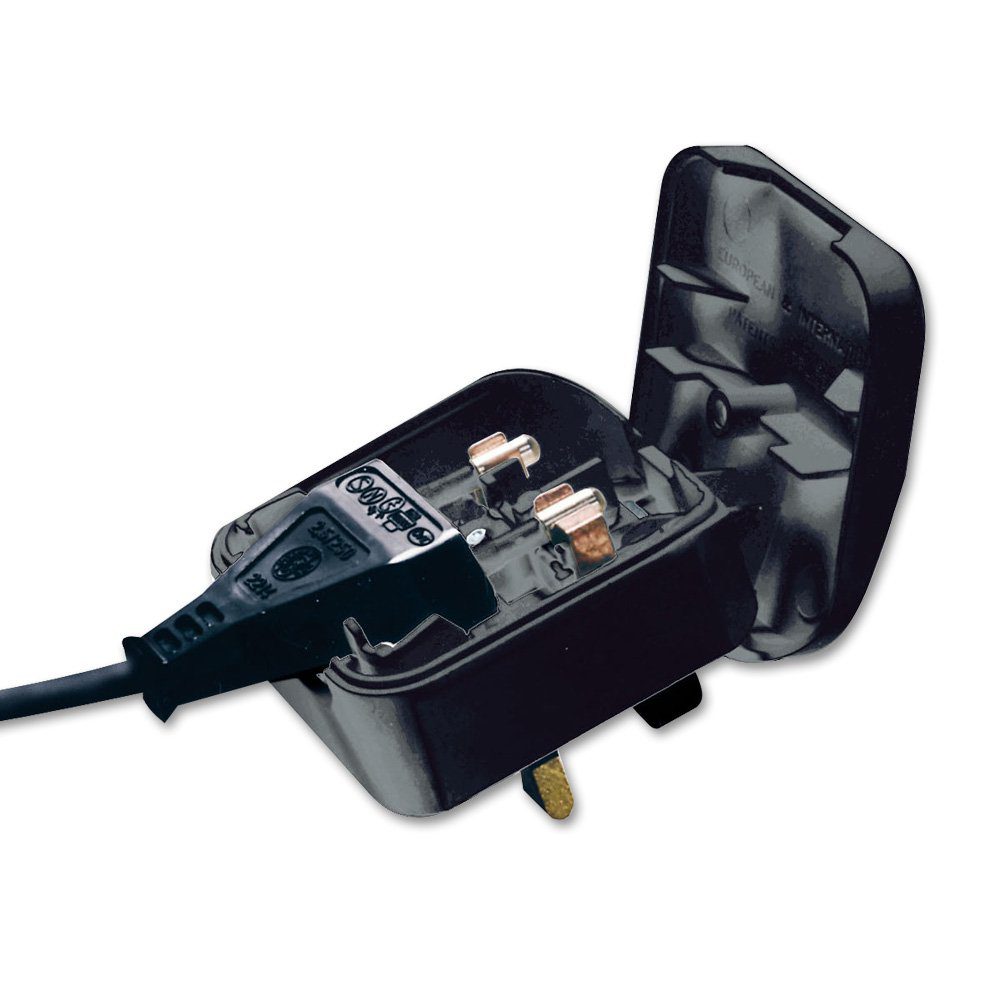
Move the holder away and give each small screw a few turns to start your holes in the viv. Then remove the screws, put the holder back in place and replace the screws, making sure they screw firmly into place. Then put your bulb in.
Now place your heat mat and thermostat sensor at the same end as your heat lamp. Gaffa tape the heat map to the bottom of the viv and make sure your thermostat sensor is just above it. Again, be sure to run your leads through the gaps provided in the viv.
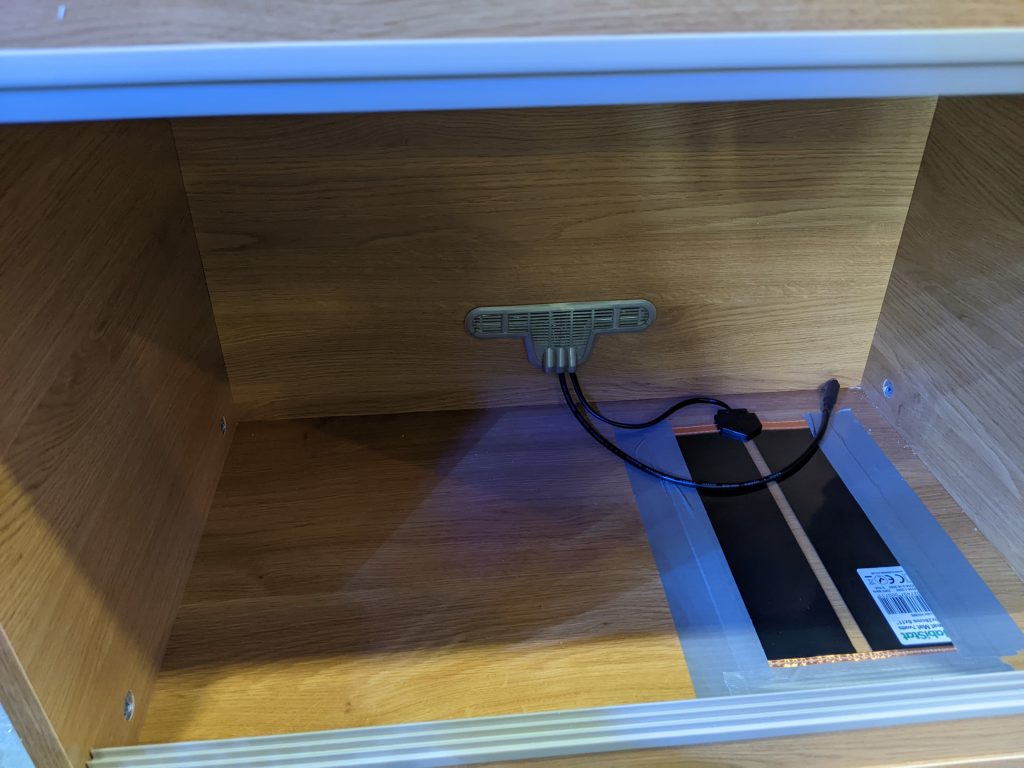
Once this is done and you’ve made sure your wires are tidy it’s time for some substrate.
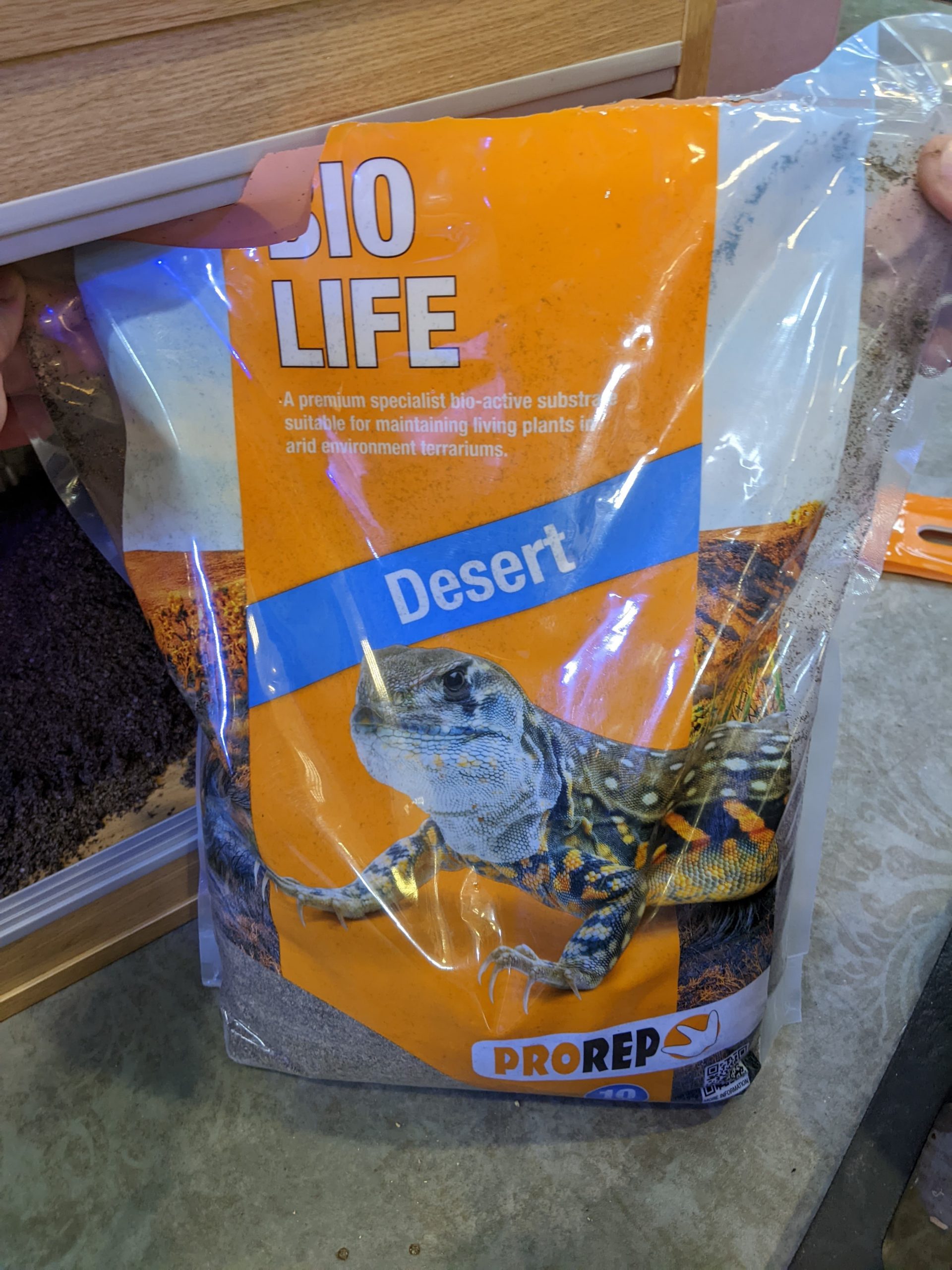
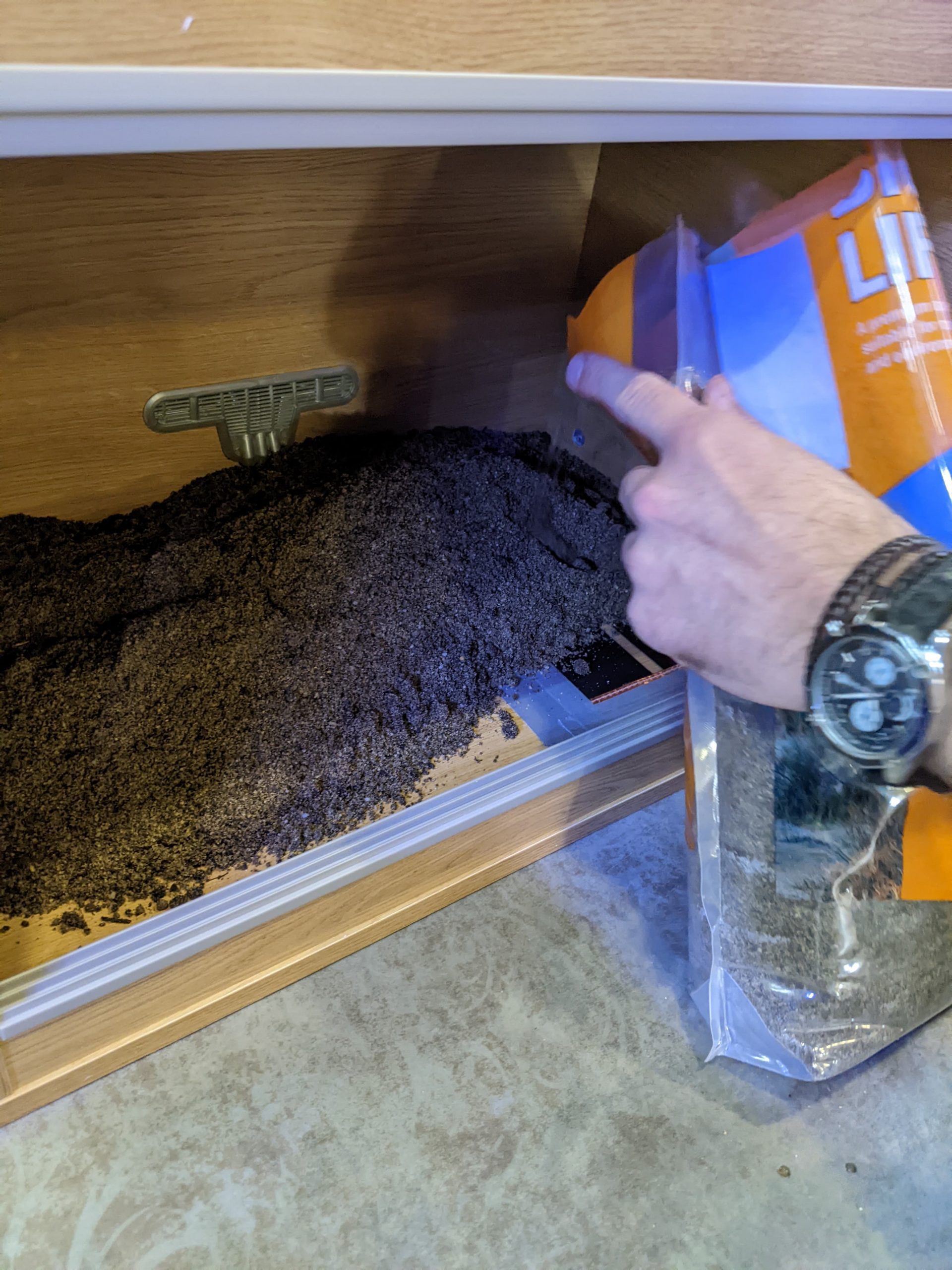
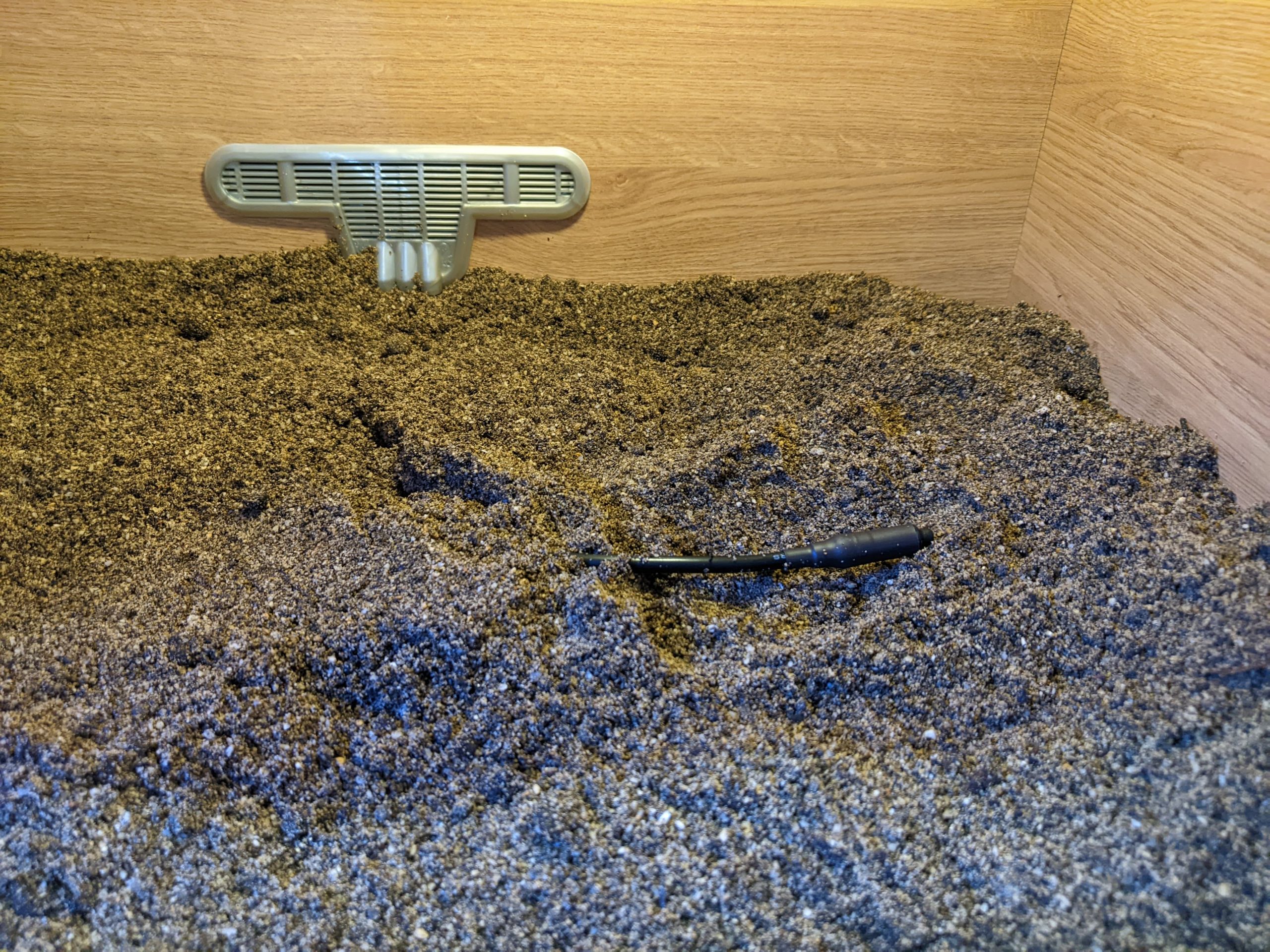
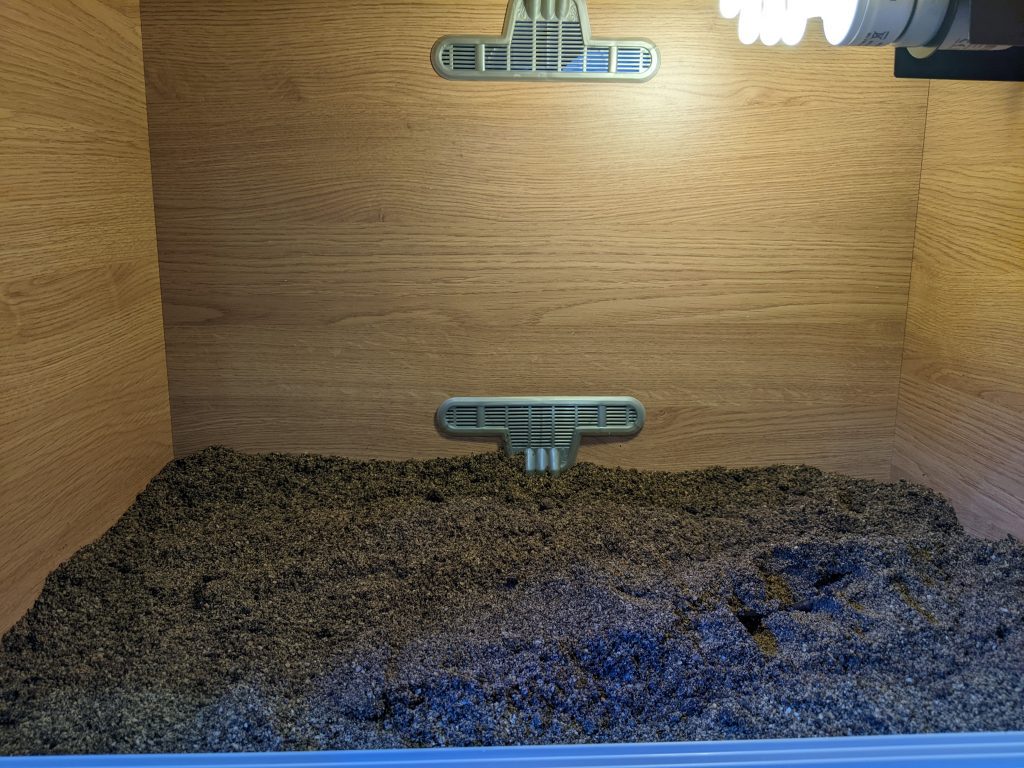
With this habitat Nigel wanted to create a warm end and a cool end. In this instance the right hand side is the warm end and the left is the cool end. There’s no right or wrong way around but you’ll notice Nigel prefers his heat on the right hand side of all the set ups he creates!
Now it’s time to start creating an environment within your Leopard Gecko vivarium.
Nigel’s top tips for creating a good habitat;
- Look closely at the natural environment of the animal. In almost every case keepers use too little ‘hardscape’ (rocks and wood and general ‘stuff’). Get stuck in and enjoy building up an environment.
- Don’t get caught up with the idea of large structures you need to silicon in place or glue together. They’re a pain when it comes to cleaning, feeding, and maintenance. Also, you may want to rearrange things from time to time!
- Layer up your floor. Nature is very rarely flat so pop in some ridges and raised areas – this also allows you to play around with ‘underground’ elements. Like this!
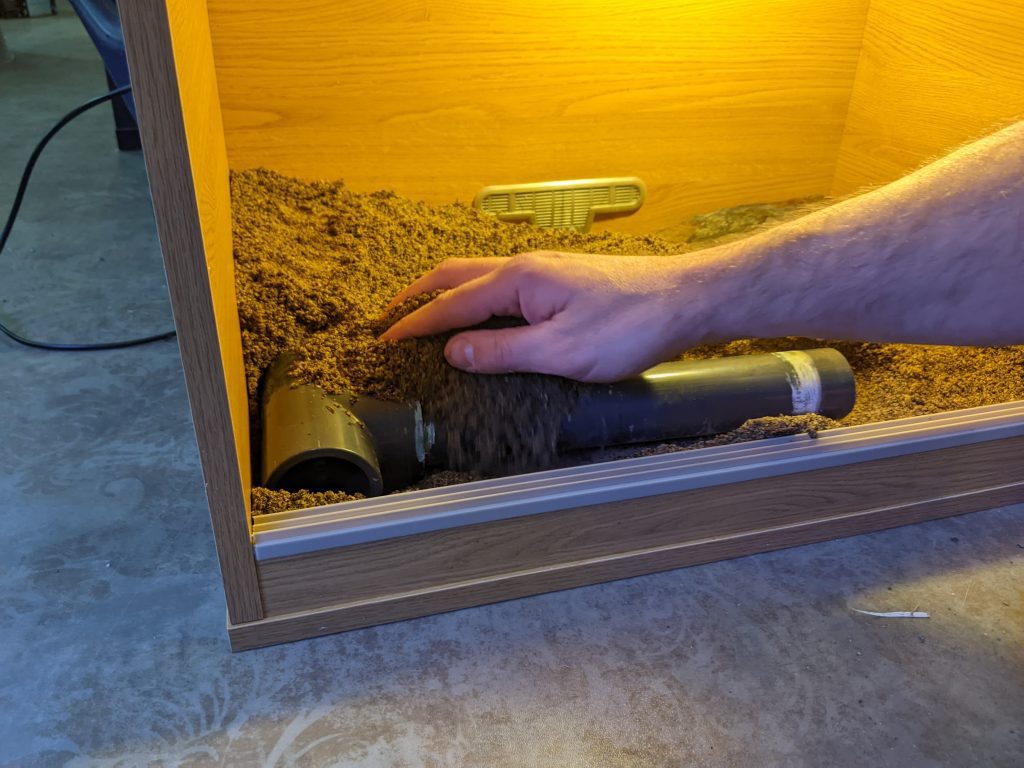
Next up it’s time for some rocks. Nigel spent a little more than 10 minutes playing around with this because it’s fun! But it could be done quicker. We used a large bit of slate which we broke into shards to put together to form a structure that offered plenty of hiding places and climbable surfaces.
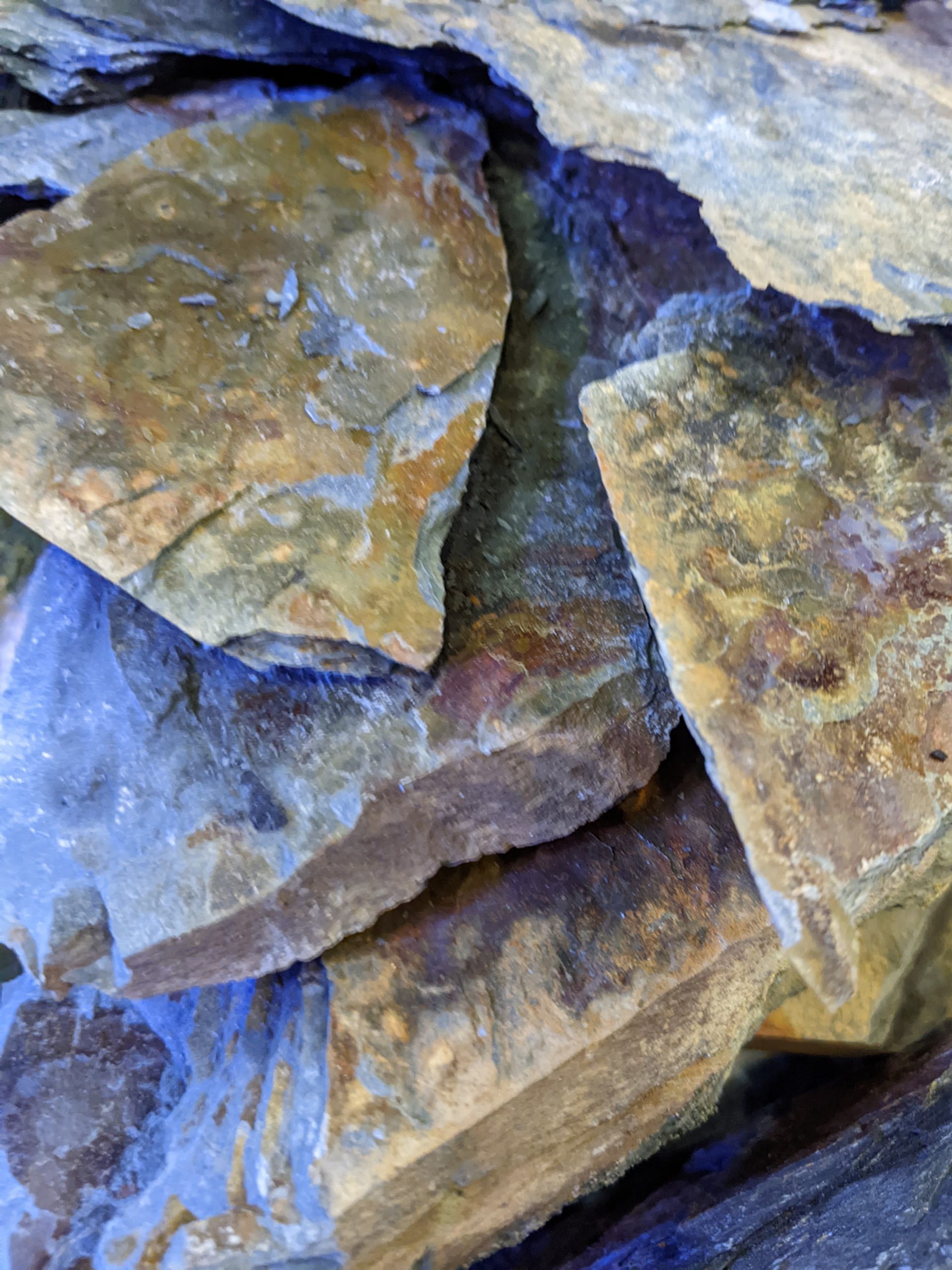
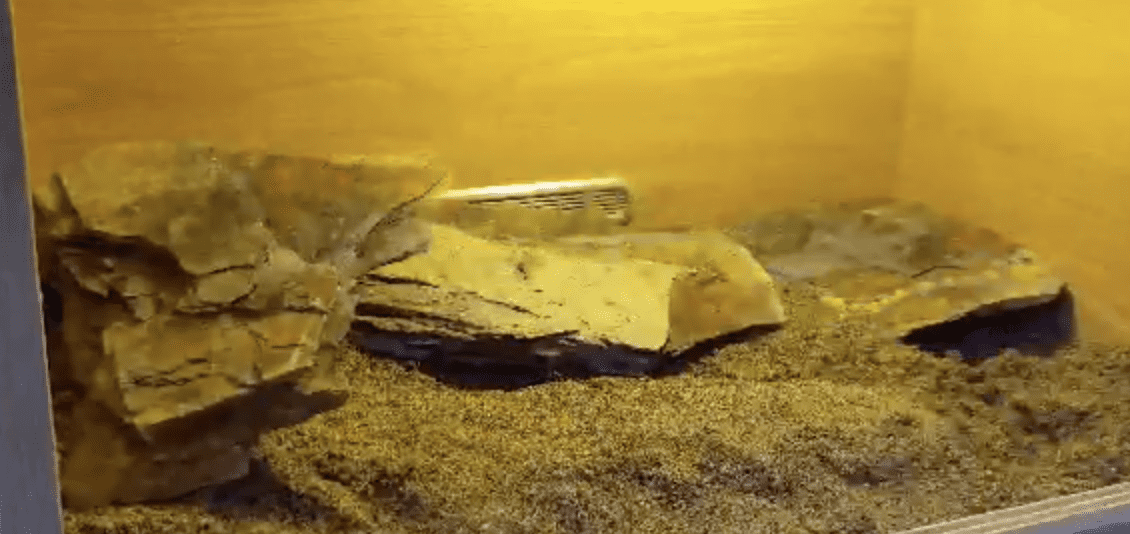
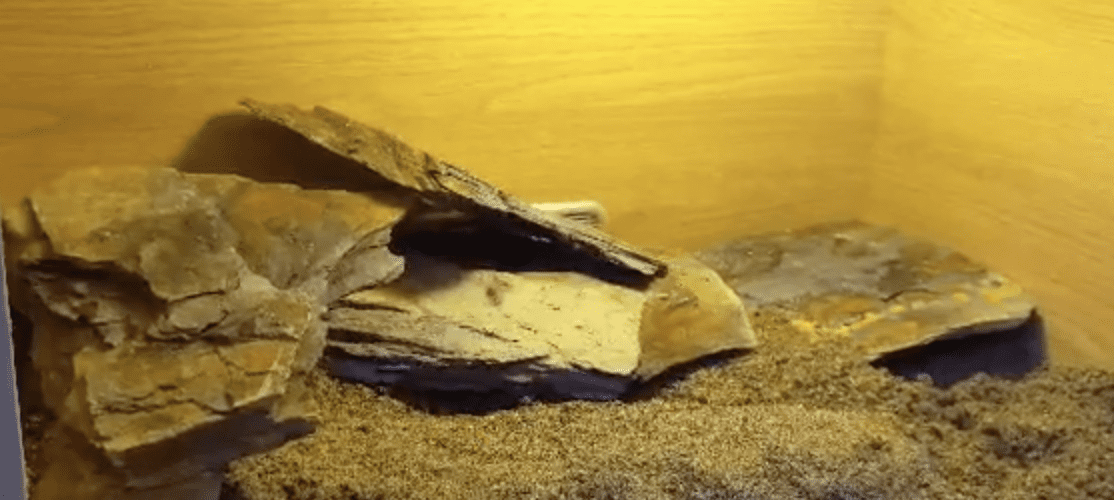
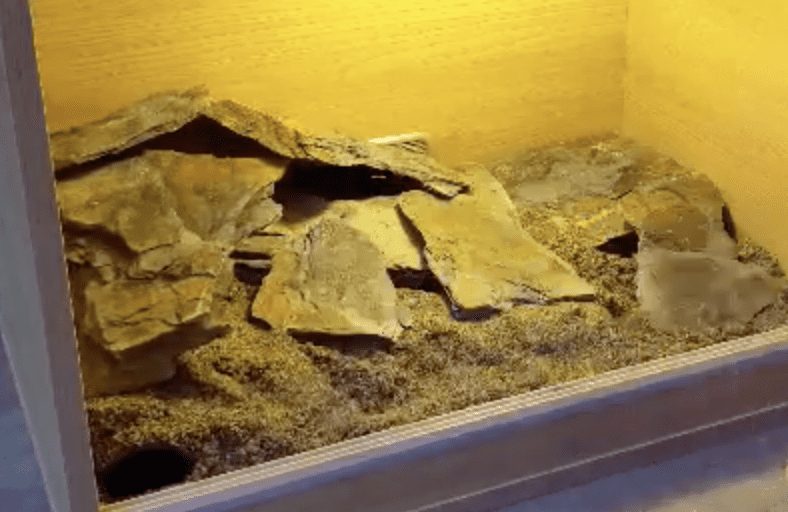
With this viv being arid it is important to stick to what would naturally occur in an arid landscape. Nigel chose one arid plant to put into his habitat. Then he tossed some leaf litter over everything. Be careful not to ‘arrange’ things too much. When it comes to planting just take the plant out of its pot and push it straight into the substrate. This substrate is ‘active’ meaning it has nutrients in it that will support the plant.
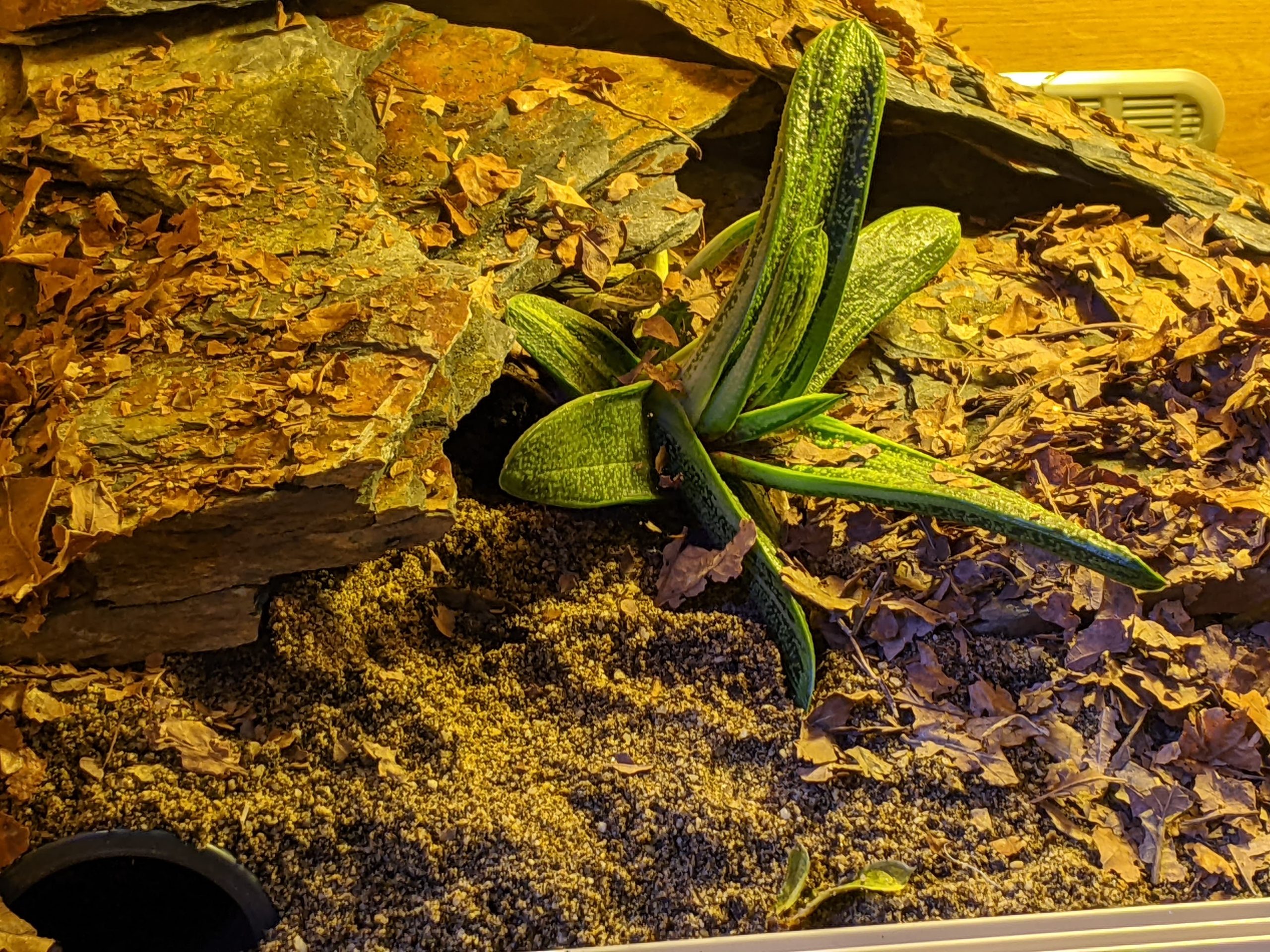

For the final touches Nigel selected a bit of petrified oak to add a bit of balance to the set up, popped a water bowl in and there it was! Our Leopard Gecko vivarium all done in no time at all and looking fantastic!
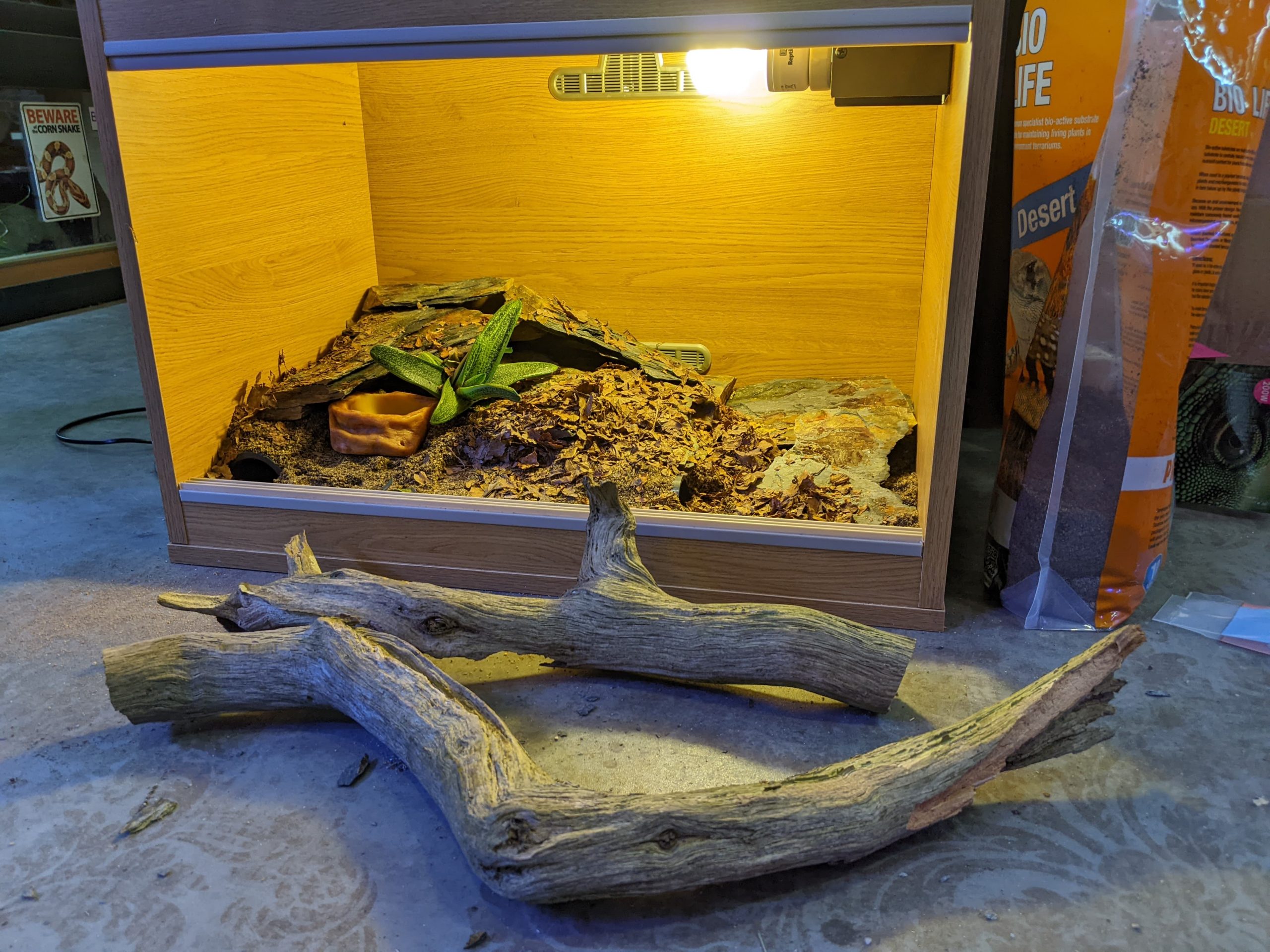

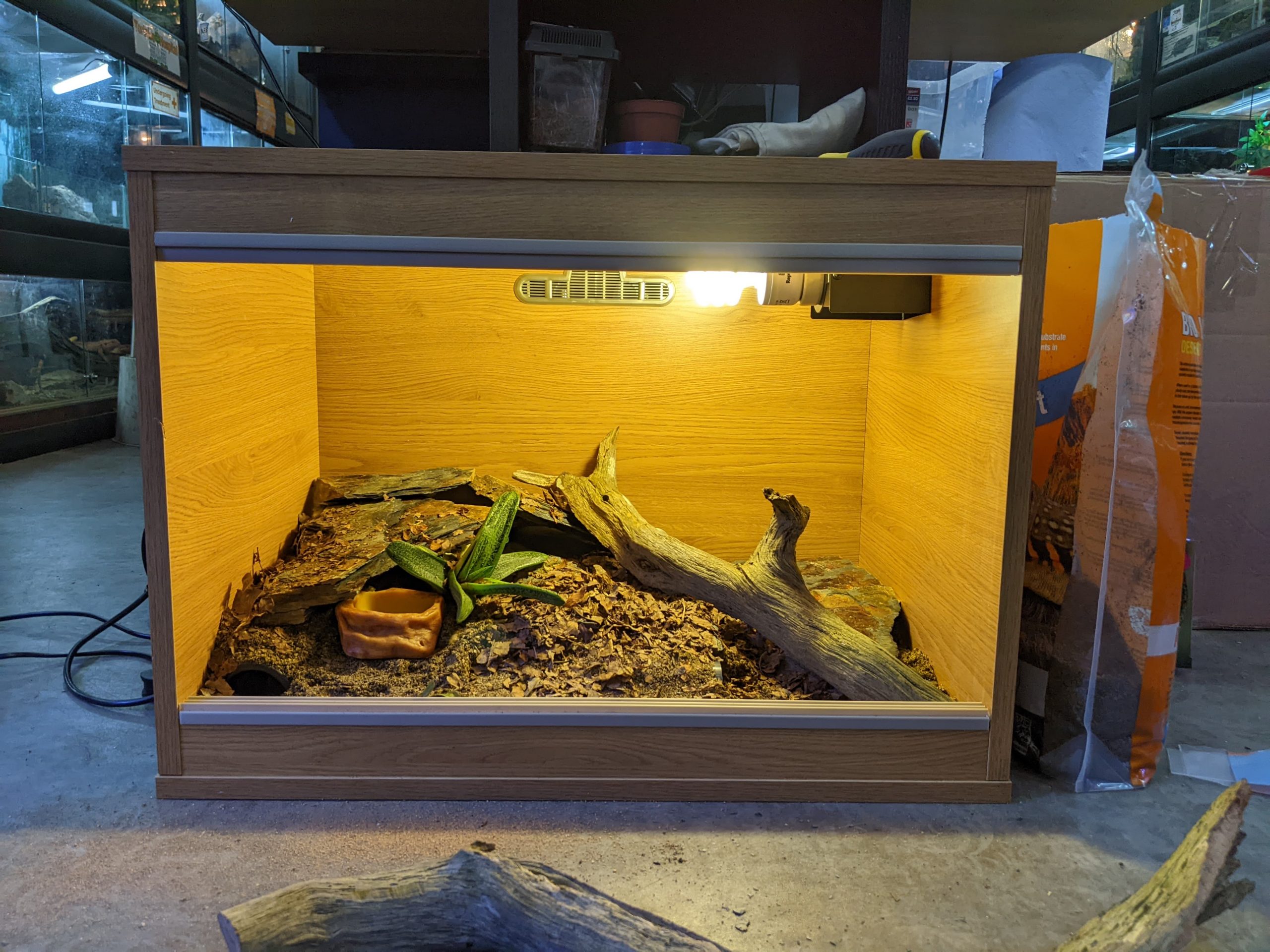
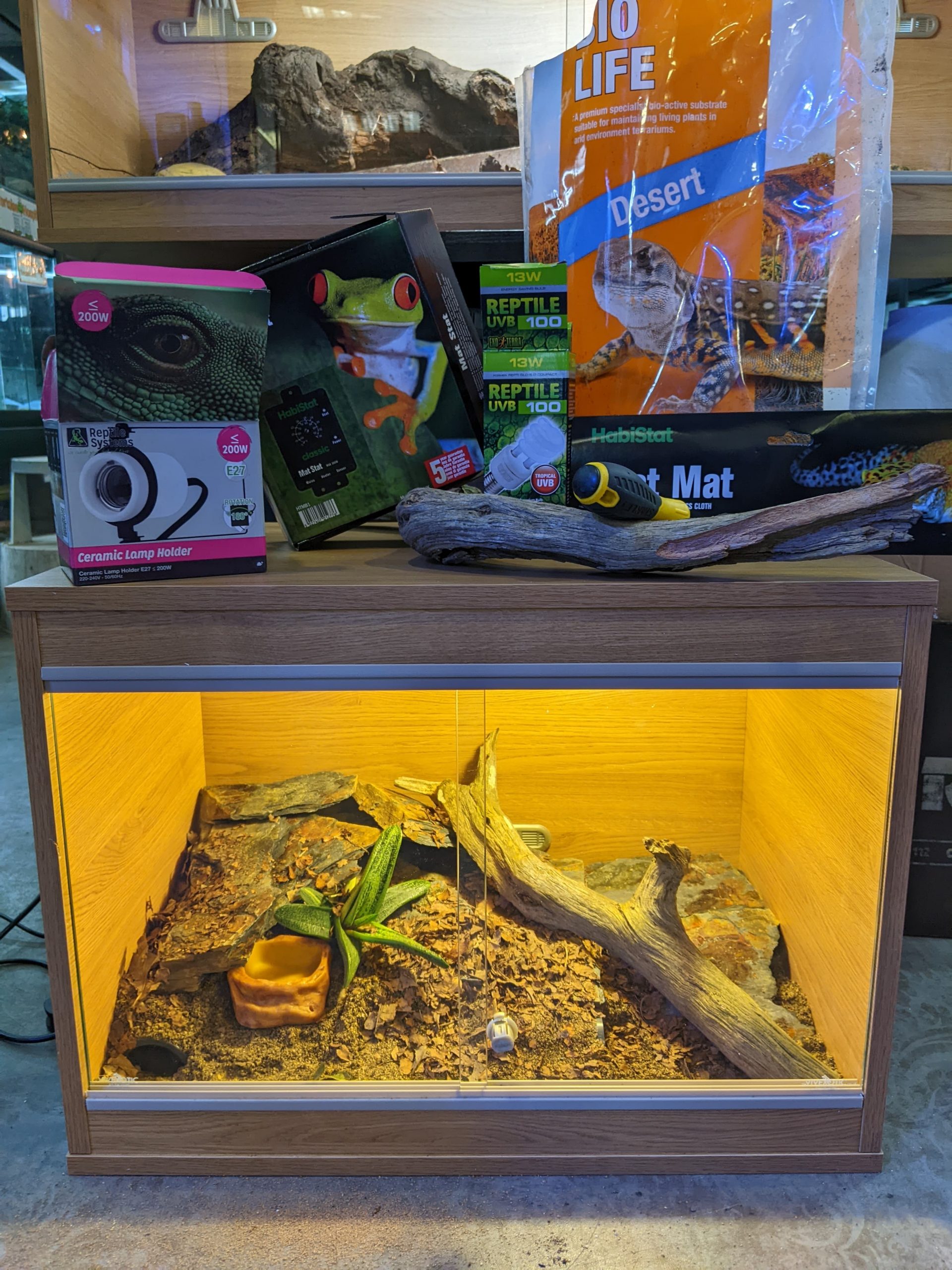
Nigel is an expert, knows exactly what he’s doing and, if anything, was slowed down by Martin buzzing around taking pictures and asking questions in his ear – but it really is this simple to create a wonderful habitat for your beloved pets.
UP next, you’ll want to be feeding them! If you want to know how much you should be feeding your pet lizards read this article.
We’d love to see some examples of the setups you’ve made at home – make sure to tag us on social media when you show them off!






